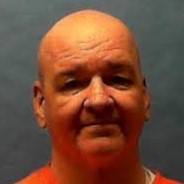
d: 2025
Brandy Bain Jennings
Summary
Name:
Years Active:
1995Status:
DeceasedClass:
Mass MurdererVictims:
3Method:
Throat SlashingDeath:
May 18, 2025Nationality:
USA
d: 2025
Brandy Bain Jennings
Summary: Mass Murderer
Name:
Brandy Bain JenningsStatus:
DeceasedVictims:
3Method:
Throat SlashingNationality:
USADeath:
May 18, 2025Years Active:
1995bio
Brandy Bain Jennings was born around 1969 in the United States. Very little has been publicly documented about his childhood, family background, or education. At the time of the murders, he was 26 years old and residing in Florida. He had previously worked at a Cracker Barrel restaurant in Naples, where he met his eventual victims and co-defendant.
By the mid-1990s, Jennings was no longer employed at the restaurant but still knew about its operations, routines, and staff. He was described in some reports as troubled, but there are no widely available psychological evaluations or detailed records indicating mental illness. He later entered into a relationship or close alliance with Charles Jason Graves.
murder story
On the night of November 15, 1995, Brandy Bain Jennings (26) and his co‑defendant Charles Jason Graves (18) carried out a violent robbery at the Cracker Barrel restaurant in Naples, Florida, where both men had formerly worked. Their plan had been forming for some time, following earlier unsuccessful attempts to rob or otherwise exploit the restaurant.
Jennings had worked at Cracker Barrel for about eleven months as a grill cook. He reportedly felt held back by management, specifically associate manager Dorothy Siddle, who evaluated grill cooks. Jennings believed Siddle prevented him from advancing. After quitting in mid‑September 1995 because he wasn’t earning enough to cover obligations (including a truck payment), he and Graves began discussing how to get money.
Graves had been hired during this period as a dishwasher; Jennings introduced him to the job. The two grew close, both financially strained. They toyed with different schemes. One discussed plan: snatch a money bag from a manager going on a bank run. Another: rob the restaurant at night. They also purchased and prepared tools. For instance, in mid‑October, Jennings bought a large Buck folding knife at Kmart, black plastic handle, which would later be identified as the murder weapon. Graves bought a Daisy CO₂ pellet pistol (doing so because he was under 21, so couldn’t legally buy a real gun). They discussed using the pellet gun to scare staff rather than hurt them.
On that November morning, Jennings and Graves approached the Cracker Barrel sometime between 1:00 and 2:00 a.m. from the woods behind the restaurant. They waited in the truck, smoking and planning. Around 4:33 a.m., Dorothy Siddle, as associate manager, deactivated the alarm and began opening procedures for the restaurant.
Donna Howell, a cook scheduled to open, arrived at about 4:43 a.m., saw Siddle’s car and tried to buzz in. When nobody responded, Howell eventually called the police after getting concerned. Deputies arrived around 5:16 a.m., forced entry by breaking a front window when there was still no response. Inside, they found the restaurant’s office door ajar, the safe open, cash boxes and other containers knocked over.
In the freezer (used for freezer storage, meat/vegetables stacked along walls), lay the three bodies: Dorothy Siddle (38), Vicki Smith (27), and Jason Wiggins (18). All had their throats slashed. Hands were bound with electrical tape: Siddle’s hands were bound behind her back; Smith and Wiggins had tape around one wrist though the tape had loosened or come partly undone on the other wrist. They were on the freezer’s floor, in pools of blood.
Investigators found footprints leading from the freezer through the kitchen and into the office; blood‑spots around the kitchen sink; the safe (which had been forced open) surrounded by plastic containers and cash. Outside, in the area behind the restaurant, scattered bills and coins, a pair of blood‑stained gloves, shoe tracks, the Buck knife, its case, and the Daisy pistol were discovered. Additional evidence included bloody shoe prints matching those of Jennings’s shoes found later.
Jennings and Graves were arrested roughly three weeks later in Las Vegas. Jennings gave taped statements to Florida law enforcement. In those, he admitted his involvement in the planning and execution of the robbery; he said he wore gloves, used the Buck knife, taped victims’ hands, and directed police to evidence he'd thrown into a canal. However, Jennings claimed he wasn’t sure who delivered the fatal throat slashes. In one untaped interview, when confronted with inconsistencies, he said: “I think I could have been the killer. In my mind I think I could have killed them, but in my heart I don’t think I could have.”
Evidence from forensics backed up much of the scene: the medical examiner testified that the wounds were “sharp force injuries” caused by a strong sharp blade, consistent with the Buck knife. Blood traces were found on the knife, knife case, gloves, and around the sink.
At trial, Jennings was found guilty of three counts of first‑degree murder and one count of robbery. Graves, though fully involved, had the death penalty waived in his case in exchange for giving up a continuance demand; he was sentenced to life imprisonment. Jennings’s jury recommended death by a vote of 10‑to‑2 on each murder charge. In October 1996 Jennings’s trial took place, while Graves had been tried earlier. Sentencing followed based on jury recommendation.
Jennings was convicted and sentenced to death for each of the three murders, plus 15 years for the robbery.
Over the years, Jennings pursued appeals and post‑conviction relief. One issue raised was whether his legal counsel was ineffective during the penalty phase, for example, failing to sufficiently investigate his childhood or background. Federal habeas corpus petitions challenged parts of his sentencing. Most appeals, as of the latest, have failed to overturn the conviction or death sentence.
Brandy Bain Jennings died on May 18, 2025 while on death row.